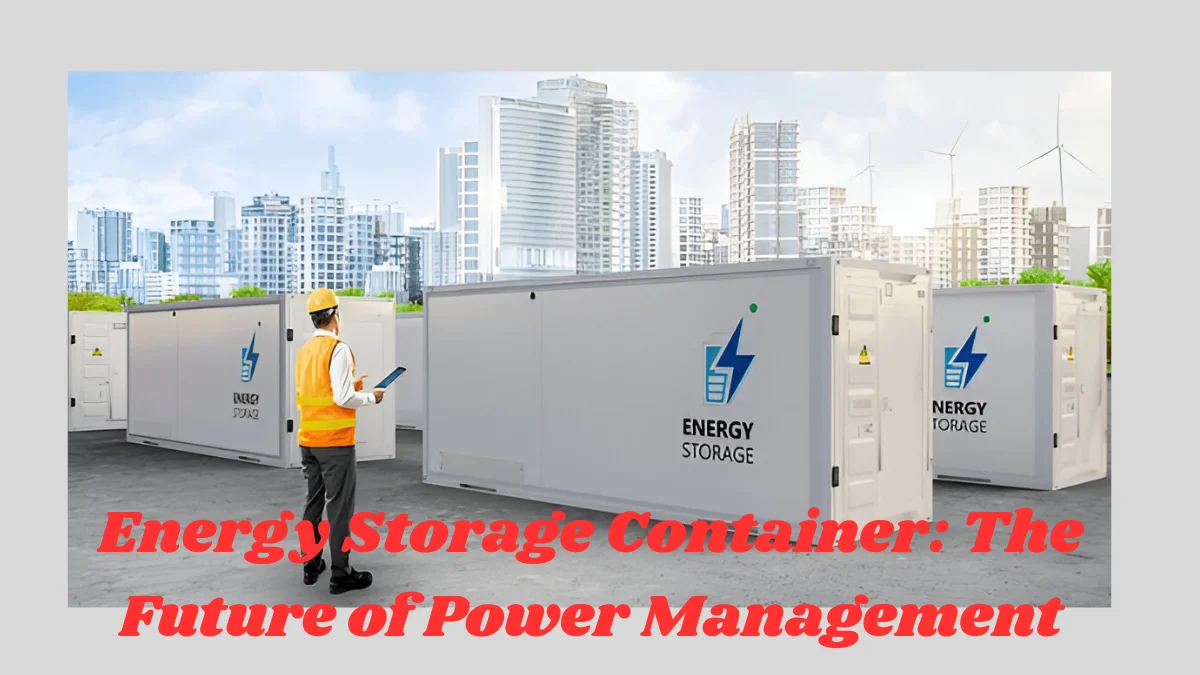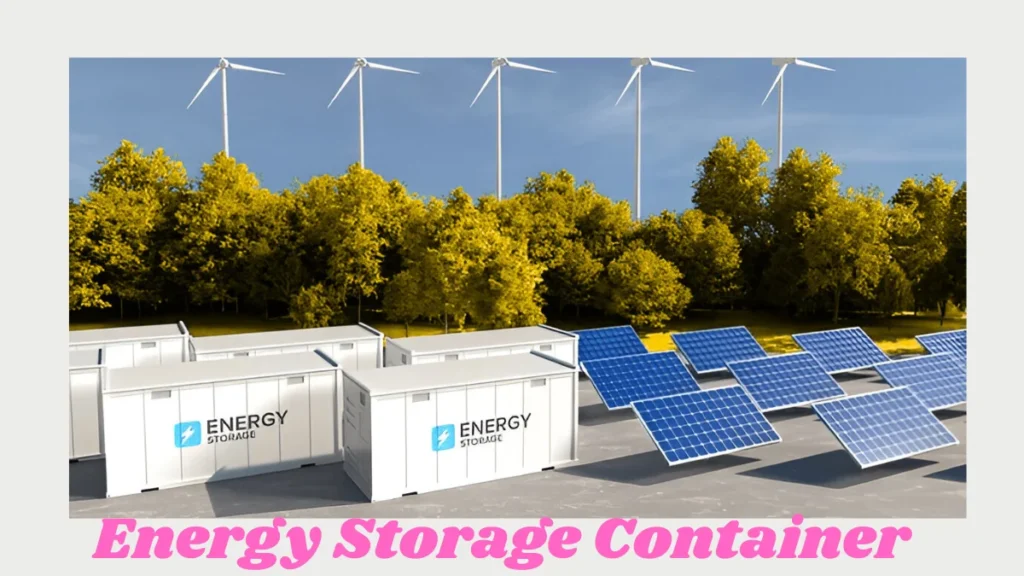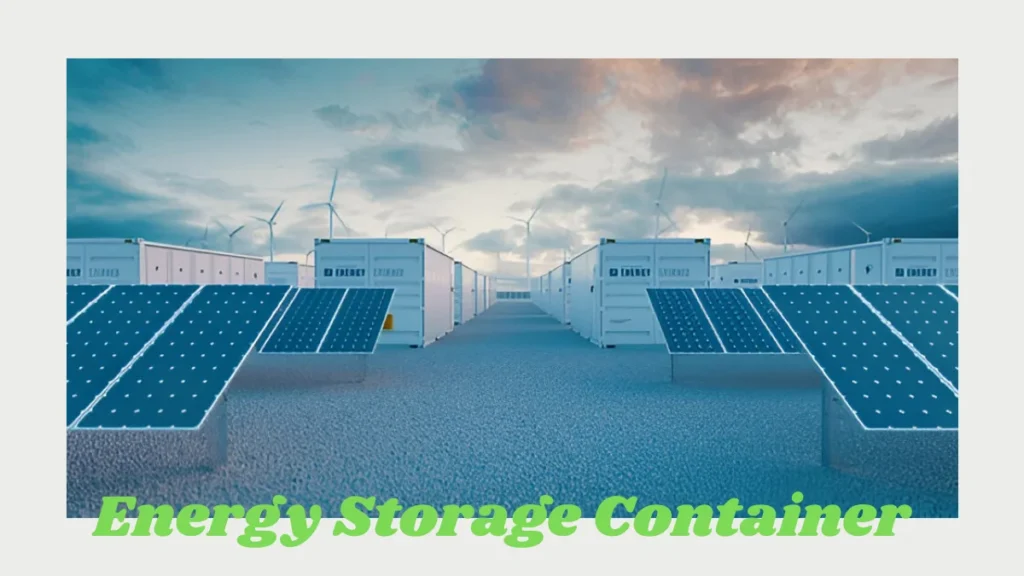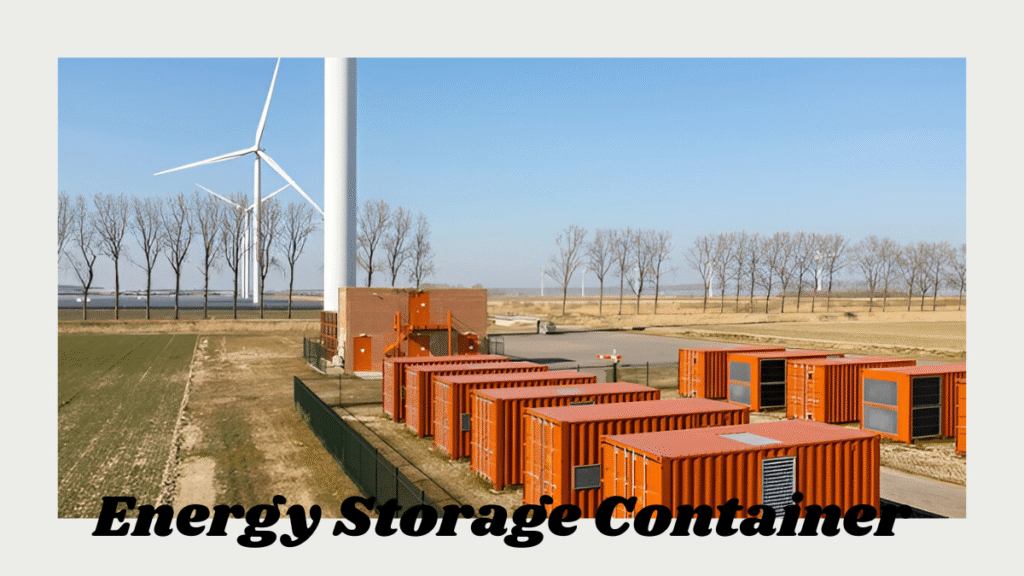
Table of Contents
In today’s rapidly evolving energy landscape, energy storage containers have emerged as game-changers. Whether you’re trying to store solar power for your home, manage energy for your business, or provide electricity in remote areas, these smart units offer flexible, reliable solutions. Let’s unpack everything you need to know in plain English.
What is an Energy Storage Container?
An energy storage container is basically a modular power bank on steroids. It’s a large, usually containerized system that stores electrical energy, often from renewable sources like solar or wind, and makes it available whenever needed.
Why Are Energy Storage Containers So Important Today?
We’re living in an age where power demands are skyrocketing, but our traditional grids are struggling to keep up. That’s where energy storage steps in.

The Rise of Renewable Energy
Solar and wind are amazing, but they’re unpredictable. When the sun isn’t shining or the wind isn’t blowing, energy storage containers pick up the slack, making renewables reliable 24/7.
Grid Instability & Power Outages
Blackouts are becoming more common. These containers act like insurance policies for your power needs, stepping in when the grid goes down.
Types of Energy Storage Containers
Not all storage containers are built the same. Let’s break down the most common types:
Lithium-Ion Battery Containers
These are the most popular. Think of them as giant versions of your phone battery, just way more powerful and stable.
Flow Battery Containers
Flow batteries use liquid electrolytes and are perfect for long-duration storage, making them great for industrial use.
Thermal Energy Storage Containers
Instead of storing electricity, they store heat. Useful for heating systems and industrial processes.
Hydrogen Storage Containers
These convert electricity into hydrogen, store it, and then turn it back into electricity when needed. It’s like bottling energy for later use.
How Do Energy Storage Containers Work?
It’s a two-step dance: store the energy and then release it when needed.
Charging the Container
When there’s excess electricity (from the grid or renewables), the container stores it in its batteries or other mediums.
Discharging the Energy
When demand rises or supply dips, the container discharges the stored energy to keep things running smoothly.

Components of an Energy Storage Container
Let’s open the hood and peek inside.
Battery Packs
This is the heart of the container, where energy is stored.
Battery Management System (BMS)
The brain behind the operation. It monitors and optimizes battery performance.
Inverter & Converter System
These components change the electricity between AC and DC, depending on what’s needed.
Thermal Management
Keeps the system cool and safe. Overheating = bad news.
Benefits of Using Energy Storage Containers
Why should you care? Let’s see what makes them awesome.
Portability and Scalability
Need more power? Just add more containers. It’s like Lego blocks for energy.
Reduced Energy Costs
Store power when it’s cheap, use it when it’s expensive. Simple and effective.
Lower Carbon Footprint
Paired with renewables, these containers can make your setup almost 100% green.
Use Cases of Energy Storage Containers
These aren’t just for big corporations.
Commercial and Industrial Use
Businesses can save on peak energy costs and ensure uninterrupted operations.
Remote and Off-Grid Areas
From rural villages to mining sites, they bring power where it’s needed most.
Emergency Backup Systems
Say goodbye to noisy diesel generators. These are clean, quiet, and ready to go.
Energy Storage Containers vs. Traditional Storage
Unlike traditional batteries or fossil fuel-based systems, these containers are modular, efficient, and eco-friendly.
Challenges and Limitations
Of course, nothing’s perfect. Challenges include:
- High upfront costs
- Battery degradation over time
- Environmental concerns around disposal
But technology is improving every year.
The Future of Energy Storage Containers
The future looks shockingly bright (pun intended).
Integration with Smart Grids
Smart grids + smart storage = intelligent energy systems that learn and adapt.
AI and Predictive Maintenance
AI is helping detect faults before they happen, making maintenance easier and cheaper.
How to Choose the Right Container for Your Needs
Ask yourself:
- What’s my energy demand?
- How long do I need backup power?
- What’s my budget?
Matching the right tech to your needs is key.

Top Manufacturers in the Market
Some top names include:
- Tesla (Megapack)
- BYD
- Fluence
- CATL
- LG Energy Solutions
Always choose certified and experienced providers.
Maintenance and Safety Tips
- Regularly check BMS data
- Keep systems clean and ventilated
- Follow manufacturer guidelines to avoid accidents or degradation
Cost Analysis: Is It Worth the Investment?
While it might feel expensive upfront, the long-term savings on electricity and downtime can easily pay off the cost.
Conclusion
Energy storage containers are the unsung heroes of our new energy age. Whether you’re trying to reduce your carbon footprint, cut energy costs, or just keep the lights on, these versatile systems offer real, reliable solutions. The world is shifting toward smarter energy—and these containers are right at the center of it.
FAQs
1. How long do energy storage containers last?
Most lithium-ion containers last 10–15 years, depending on usage and maintenance.
2. Can I use energy storage containers at home?
Absolutely! Smaller versions are ideal for home solar storage and backup power.
3. Are energy storage containers safe?
Yes, with proper thermal management and certified systems, they’re very safe.
4. How much do they cost?
Prices vary, but a typical container can range from $100,000 to $500,000+ depending on size and tech.
5. Do they need a lot of maintenance?
Not really. With remote monitoring and minimal moving parts, they’re relatively low-maintenance.
